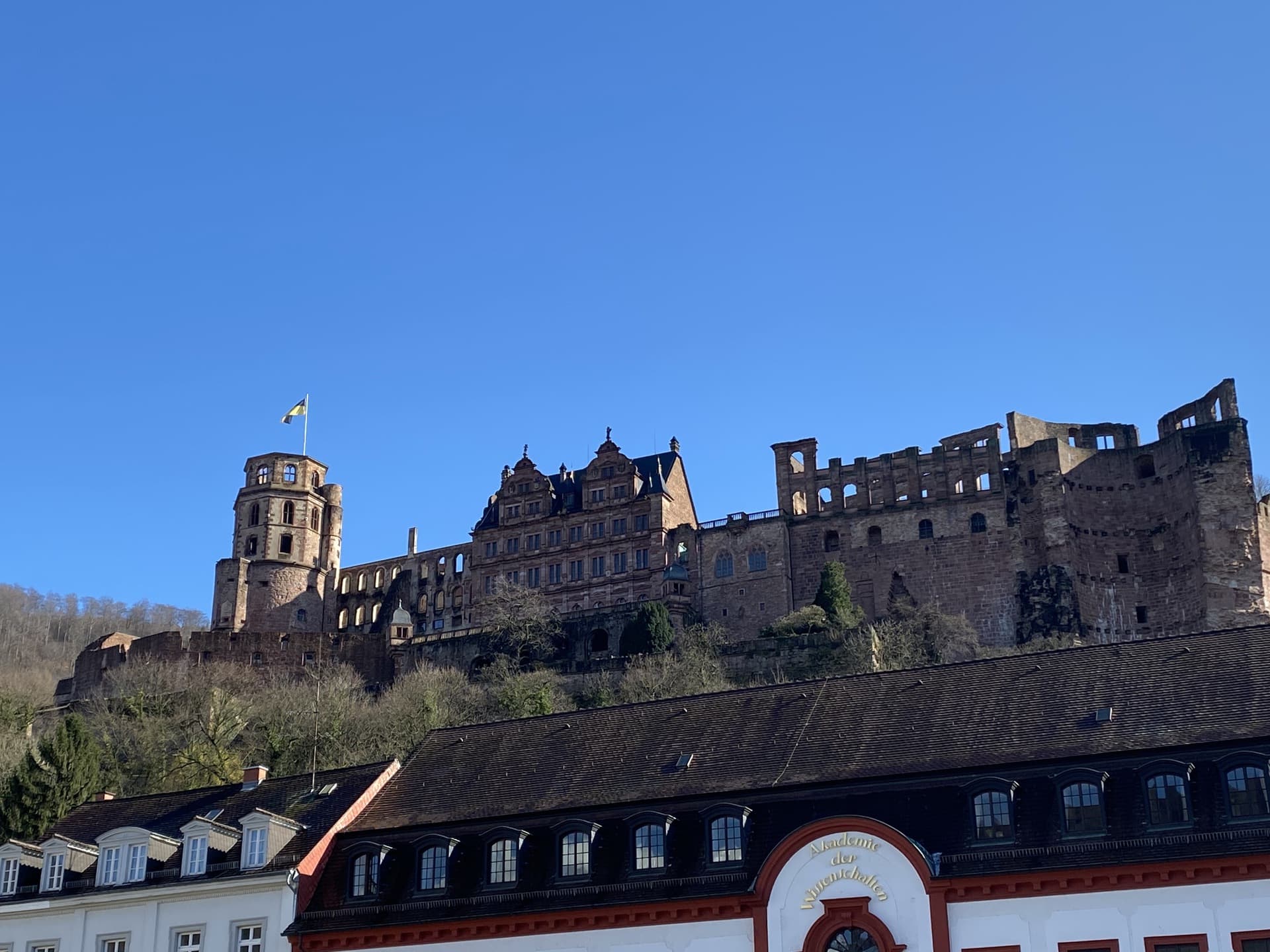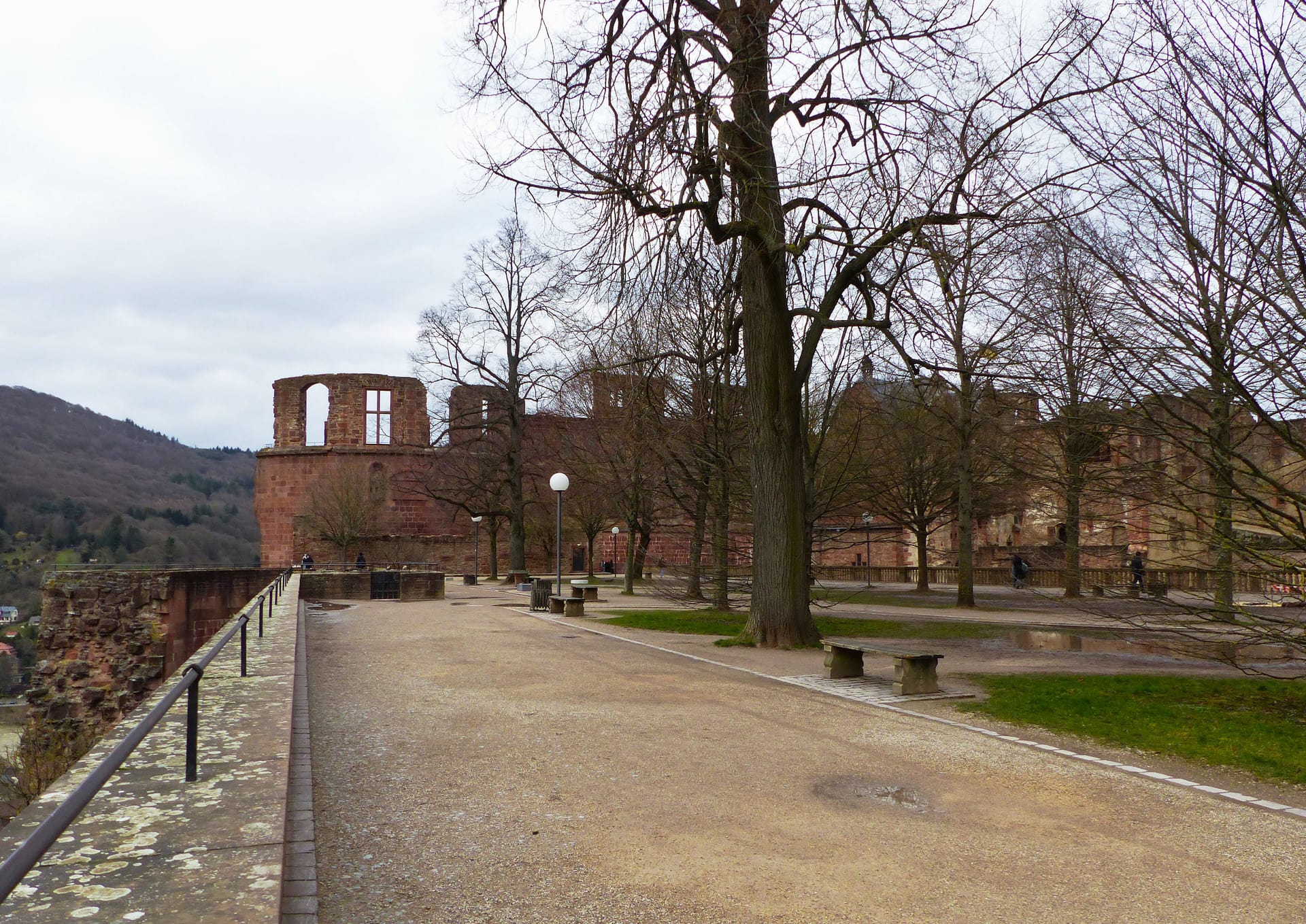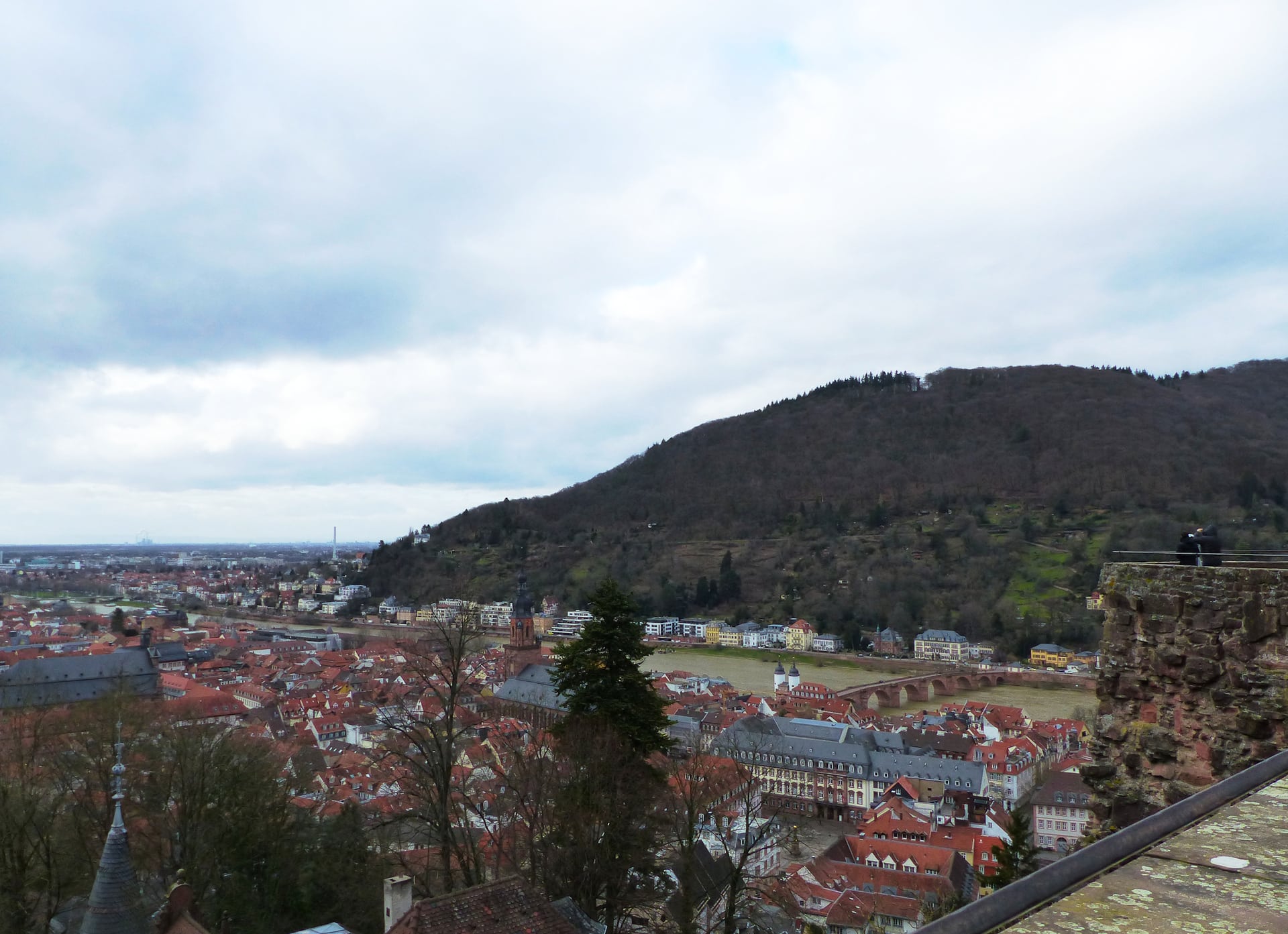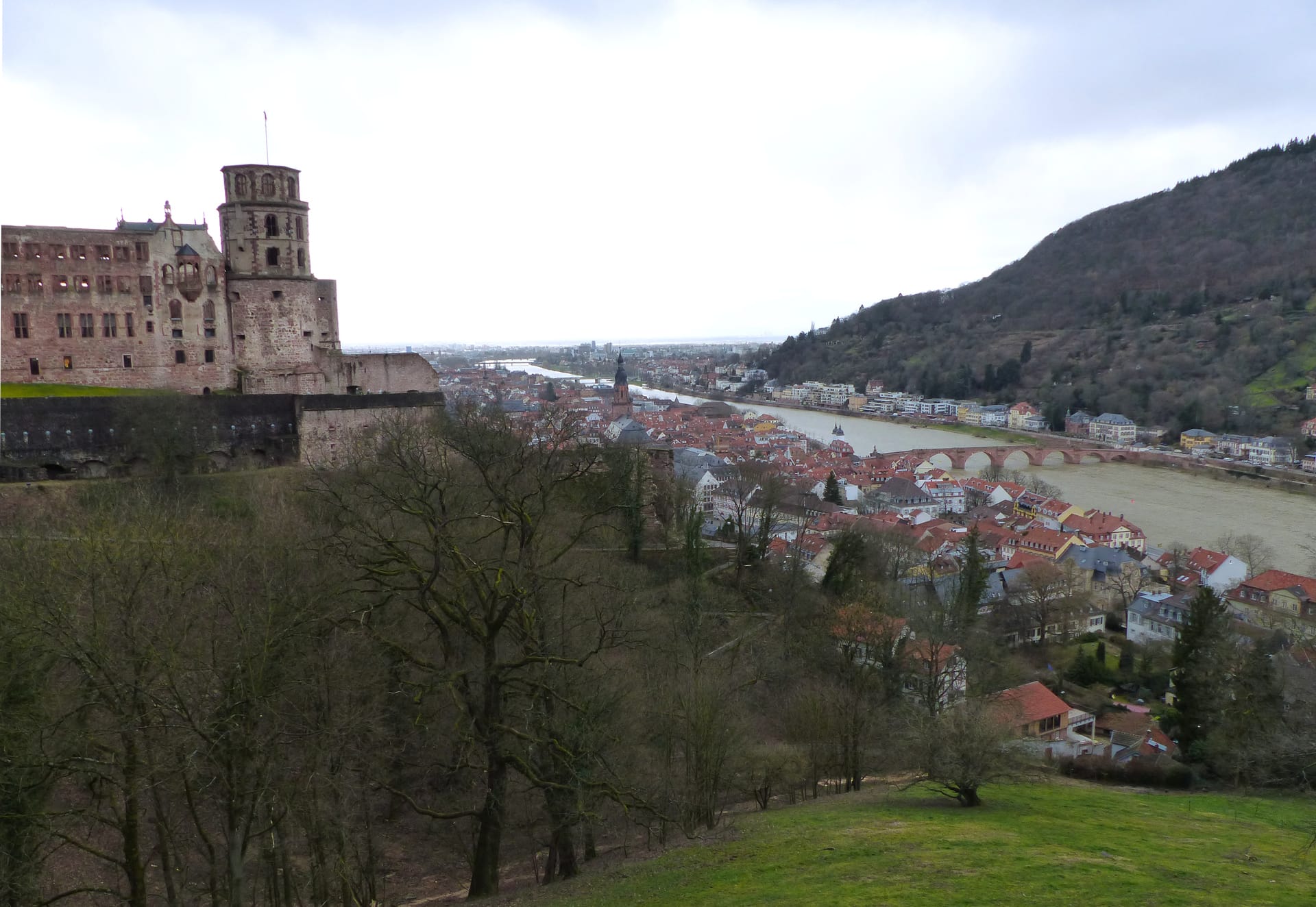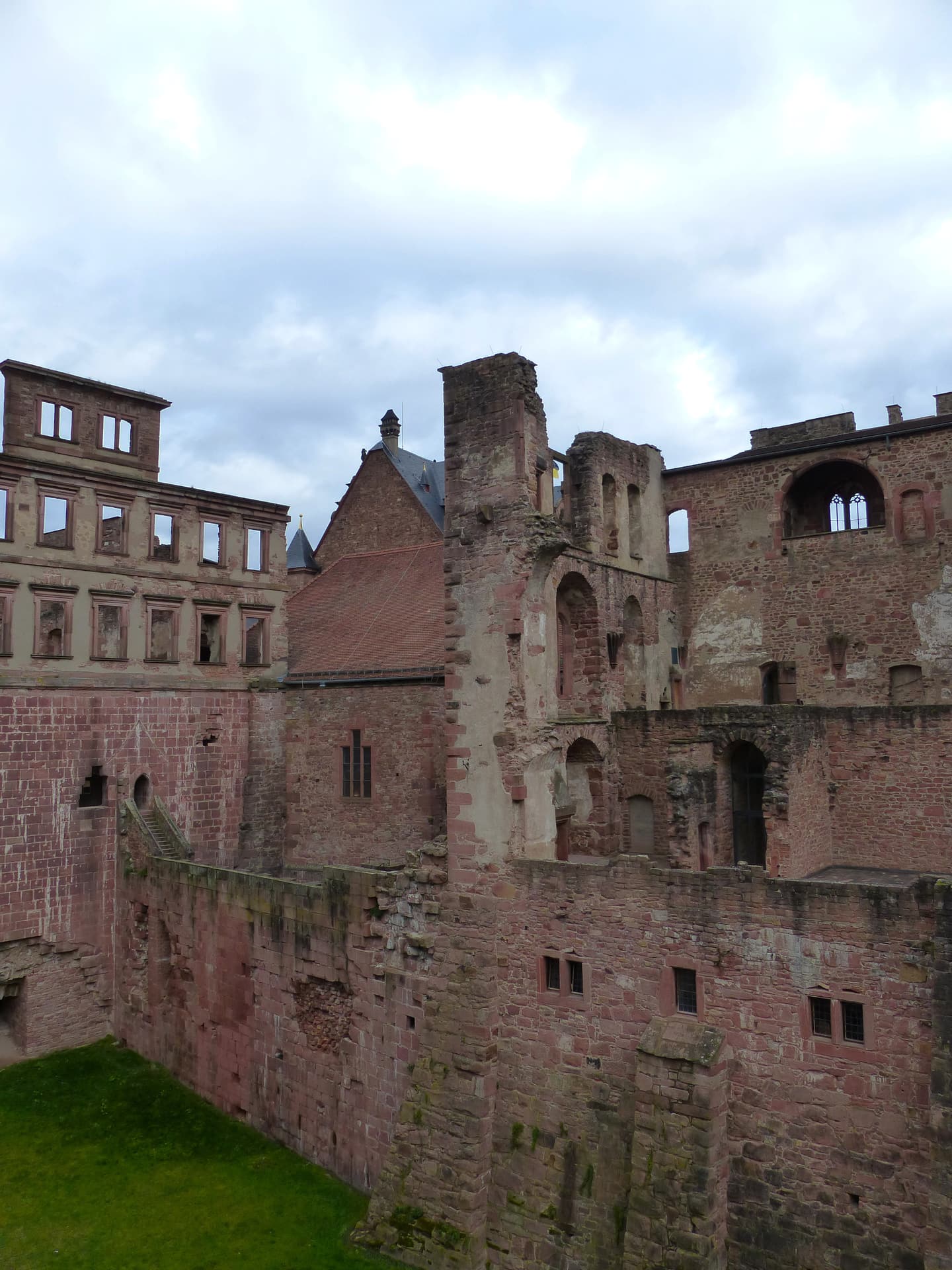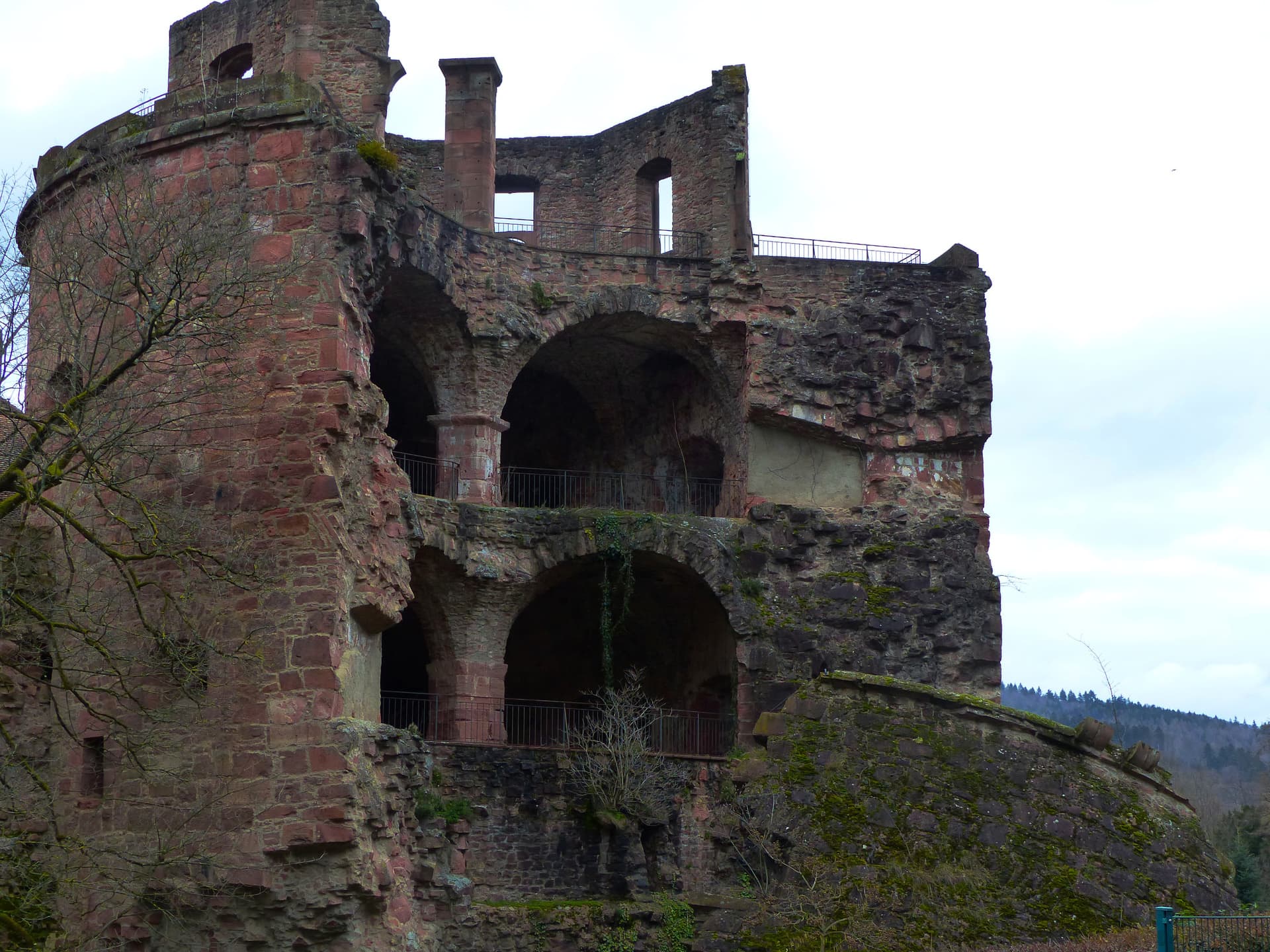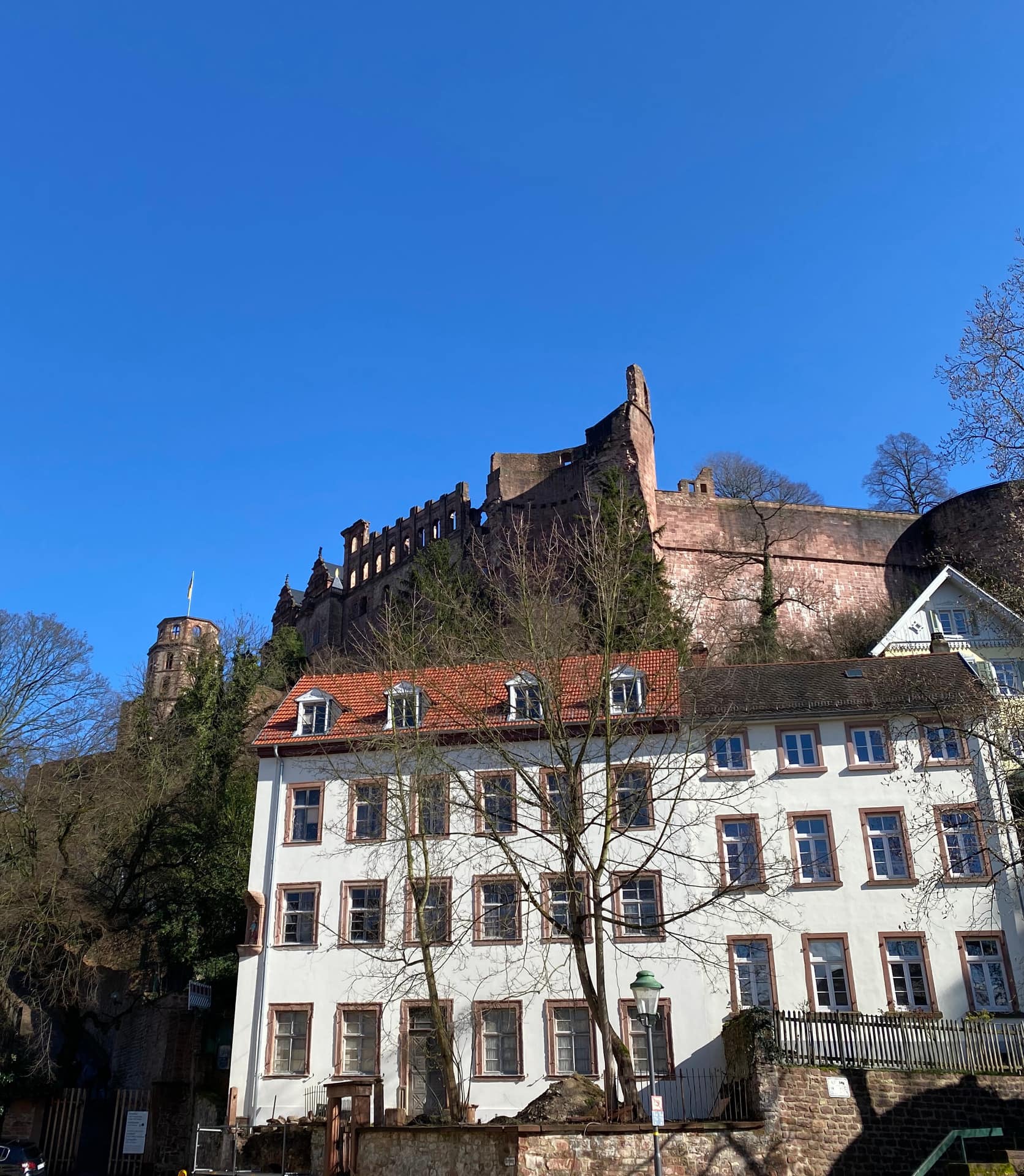The Heidelberg Catsle
All detailsHeidelberg Castle History
The development of the castle complex into a medieval ancestral seat certainly began with the award of the electoral dignity to Rudolf II in 1329. (1306 – 1353), the first Palatine elector. Already Ruprecht I. (1309 – 1390), who also founded the University of Heidelberg, ordered various enlargements of the residential buildings and a considerable strengthening of the fortifications.
Subsequent electoral princes visibly expanded the castle as a fortress with representational character. Towers, walls and ramparts were to protect against attacks. The Ruprecht Building, the Library Building, the Ludwig Building and the Glass Hall were mainly used for representation and for the demonstration of power.
Elector Ottheinrich (1502 – 1559) had the Ottheinrichsbau built – an early renaissance building with a magnificent front. The castle thus became a palace. In the following years, the Friedrichsbau, the English Building and the Hortus Palatinus garden are built, among others. This park, laid out in three terraces, with its exotic plants, aberrations, grottos and pleasure houses, was considered the “eighth wonder of the world”, but was never fully completed.
The political entanglements and the Bohemian debacle of Elector Frederick V (1596 – 1632) and the resulting Thirty Years’ War did not bode well for Heidelberg, the palace and its rulers. Destruction and plundering of the town and surrounding villages, a considerably damaged castle and the loss of the electoral dignity were the result of his failed policy. In 1649 the son of Frederick V, Charles I Ludwig, moved into Heidelberg as the new ruler. In the Peace of Westphalia of 1648, the Electoral Palatinate was granted a new electoral dignity again, but with considerably fewer privileges. The Elector began to repair his residence, but for the time being there was no money for important new buildings.
Again political entanglements led to great disaster. In 1671, Elector Karl I Ludwig married his daughter Liselotte of the Palatinate to Philip of Orleans, a brother of the Sun King, Louis XIV, who registered his claim to the inheritance in 1685, when Elector Karl II, who had been in power in Heidelberg for some time, died childless. The War of Palatinate Succession broke out and French troops twice occupied Heidelberg and the castle. While some houses and parts of the castle were still spared during the destruction on 6 March 1689, French soldiers did a great deal of work in 13 June 1693. 27000 pounds of powder brought down towers, and fortification walls during the action “Heidelberg Delta”.
The Heidelberg Castle never fully recovered from the destruction in the War of Succession. In the meantime Mannheim had been appointed the electoral residence city and the elector Carl Theodor conducted his official business from there. In 1764 all plans for a reconstruction were finally destroyed. A lightning strike caused a fire and caused further considerable damage. What remained of the former castle was a ruin left to itself, at best still used as a supplier of high-quality building materials.
The castle ruins became world-famous due to the romanticism that arose at the beginning of the 19th century. After the university was re-founded in 1803, Heidelberg experienced a second heyday and attracted students and young artists from all over Germany. They described the destroyed castle as a symbol of German history and immortalized the building in their paintings, romantic stories or verses. The most famous names from this period are Carl Philipp Fohr, Karl Rottmann and Ernst Fries, Achim von Arnim, Clemens Brentano, Friedrich Hölderlin and Joseph von Eichendorff. Even Johann Wolfgang von Goethe raved about the ruins, the city and the landscape in his diaries, notes and sketches.
Of all people, a Frenchman, the emigrated Count Charles de Gaimberg (1774 – 1864), became the saviour of the castle ruins. He was the first to make an effort to preserve the ruins. Gaimberg documented the castle in numerous detailed drawings and his art collection later formed the basis of the Kurpfälzisches Museum.
Location & Directions
If you want to go up to the castle, there are several possibilities. You can drive to the castle by car or take the mountain railway at Kornmarkt to start your way to the castle. If you are fit, there are several possibilities to get to the castle by foot. If you pass the car park P12 at Kornmarkt on the left, you have two possibilities to start the ascent to the castle. Either, one climbs more than 300 stairs to the castle and gets straight to the part of the castle where the visitor centre is located. Or one walks a steep path up to the castle and either gets straight to the castle or to the castle garden that offers a fantastic view over Heidelberg.
If you travel to Heidelberg by public transport and would like to visit the castle, it is best to get off at the Heidelberg-Altstadt suburban train stop. From there it is only a few minutes to Kornmarkt if you want to take the mountain railway. If you prefer to walk, you can take the first turn left into the street Friesenberg when you arrive in the Hauptstraße.
If you come by bus, the bus stop Rathaus-Bergbahn is located directly at the mountain railway, where you can get off.

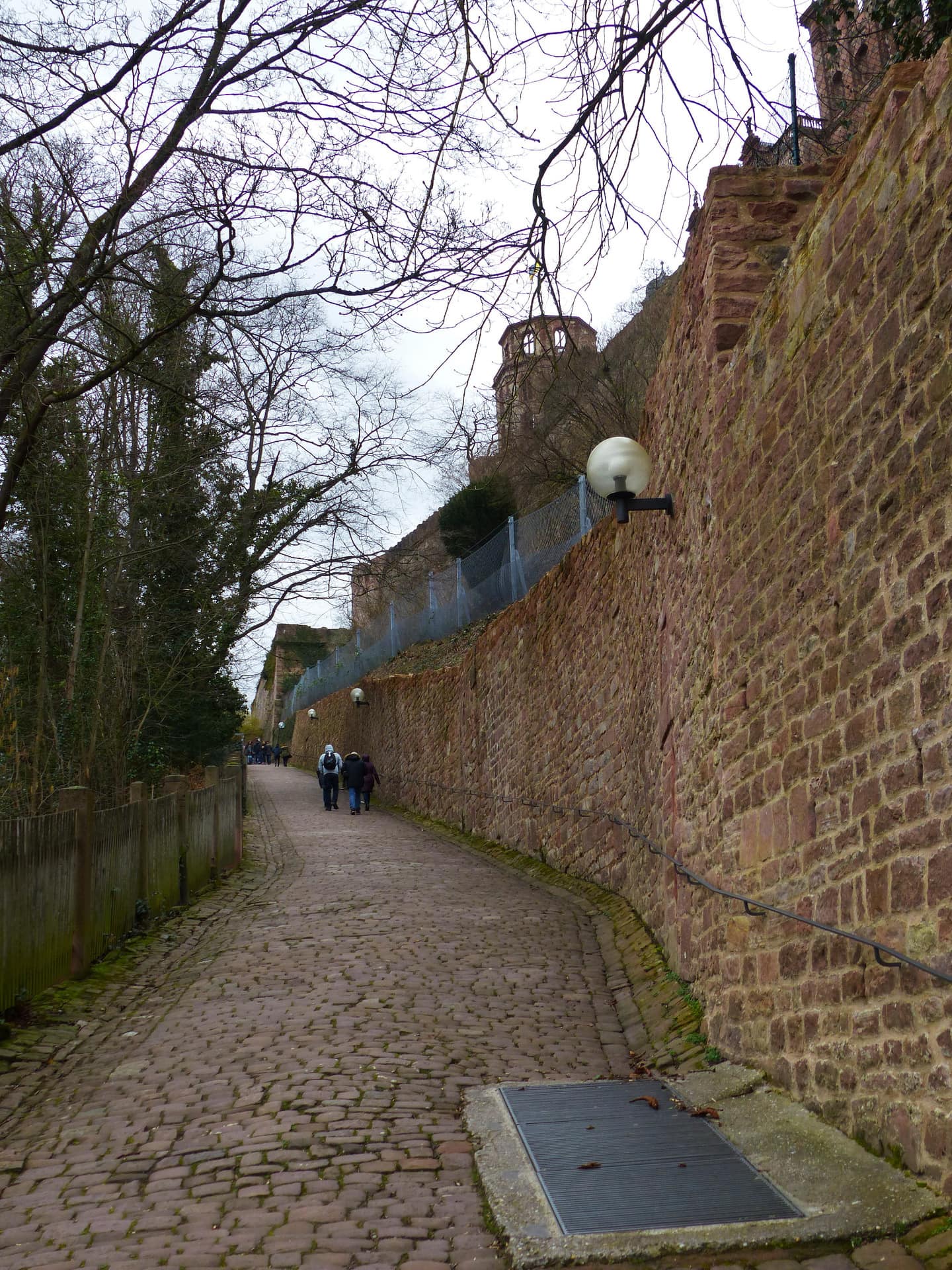
Impressions
